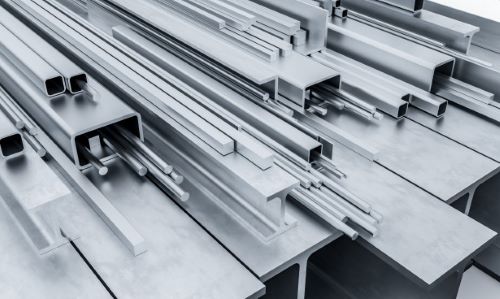

Structural steel continues to be a critical material in the construction world, and it is known for its strength, durability, and flexibility. Builders and engineers use it to design frames for constructing buildings, bridges, and other colossal structures. That is why we need to know different structural steel shapes. This blog provides a comprehensive overview of the common steel shapes, their uses, and advantages.
Common Structured Steel Shapes
Construction projects rely on several structural steel shapes. There are advantages to each so that they can be better suited for different applications respectively. The most common forms include the following:
Beams
Beams (often referred to as I-beams or H-beams) are essential for supporting loads over long distances. They are designed to carry a heavy load without bending. I-beam designs have an upper flange and a lower flange connected by a vertical web at the center. This shape is very effective in carrying loads and thus is commonly used for building floors, roofs, or even bridges.
Channels
Channels or C-beams have u-bend sections on either side. These shapes are used for framing, floor supports, and bracing. Their ability to handle loads perpendicular to their web makes them ideal for use in the construction and manufacturing industries.
Angles
An angle has two legs and forms 90 degrees with an L-shaped cross-section. Builders employ angles in framing, bracing, and reinforcing applications because of their versatility and ease of attachment to other structural components.
Tubes
Tubes (also known as hollow structural sections) are available in square, rectangular, or round shapes, often formed or cut with a CNC plasma cutter to ensure precision and clean edges. Its very shape provides equal strength everywhere, meaning that it is perfectly suited to use as a strut, prop, or frame. The hollow nature of the bars helps to keep weight down whilst also ensuring structural strength, offering a good compromise between durability and efficiency.
Plates
These flat, thick steel plates are used in a variety of applications. They are typically used as base plates, gusset plates, and connection elements in steel structures. Additional plates offer further support and stability, ensuring that the construction lasts longer.
Structural Steel Shapes Application
Knowing where and how to use different shapes of steel is key to a successful building. Some common uses-cases are:
Building Frameworks
Structural steel shapes form the backbone of many modern buildings. Beams, columns, and channels create the skeleton of high-rise buildings, warehouses, and factories. Their strength and flexibility allow for innovative architectural designs while maintaining structural integrity.
Bridges
The construction of bridges relies heavily on structural steel. Beams, plates, and tubes provide the necessary support for spanning large distances. Their ability to withstand heavy loads and harsh environmental conditions makes them the material of choice for bridge construction.
The Advantages of Structural Steel
There are several benefits when it comes to using structural steel shapes for builders and engineers, including:
Strength and Durability
The strength of structural steel guarantees a solid structure that can withstand the loads of harsh environmental conditions. It is also durable and will last longer, saving you maintenance and replacement costs.
Versatility
Steel can easily be tailored to fit into any shapes of steel that your project requires. This flexibility allows for unique designs and effective use of space.
Cost-Effectiveness
Steel may cost more upfront than other materials, but over many years, the advantages quickly recoup the initial expenditure. The former limits maintenance, speeds up construction times, and increases durability, all of which translate into cost savings.
Sustainability
Steel is environmentally friendly because it can be recycled. One benefit is that it reduces the need for raw materials and thus waste from the process. All in all, steel is highly recyclable, making it an environmentally conscious choice.
Conclusion
There are many structural steel shapes and they have different applications, so a builder or engineer should understand them because it is very important. While employing both forms is essential for the safety, quality and timeliness of construction work. Through the incredible power performance and recyclability of structural steel, architects and builders now have the ability to create buildings that are structurally sound while durable, reliable and green.


